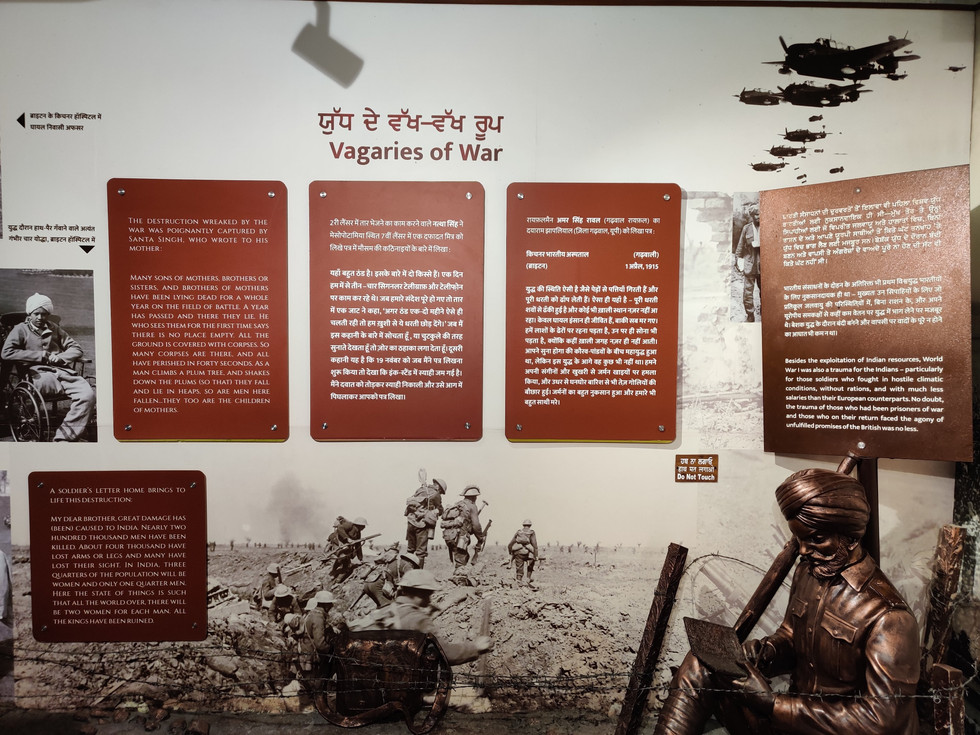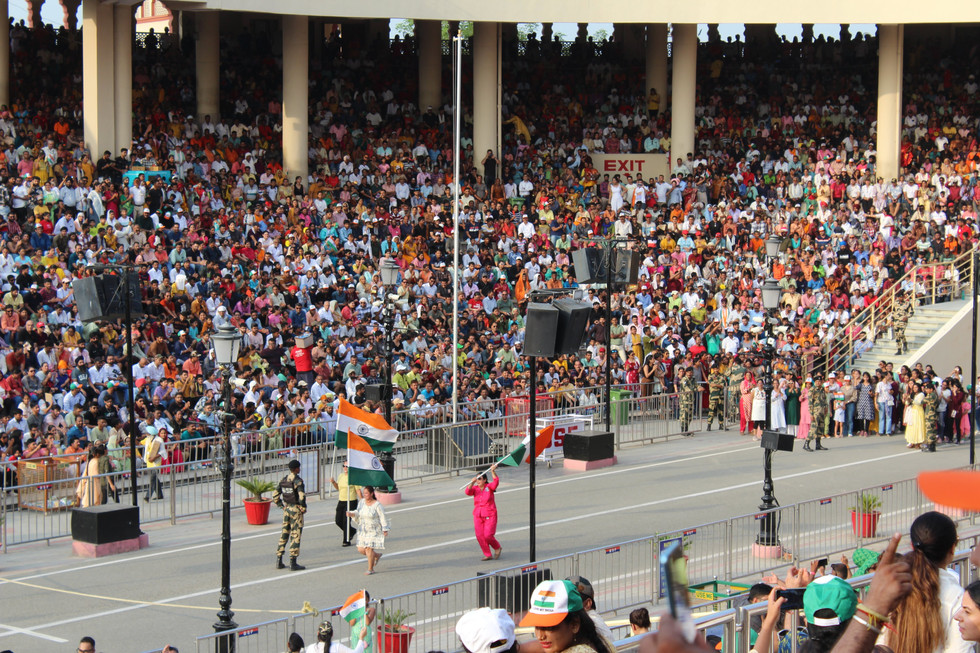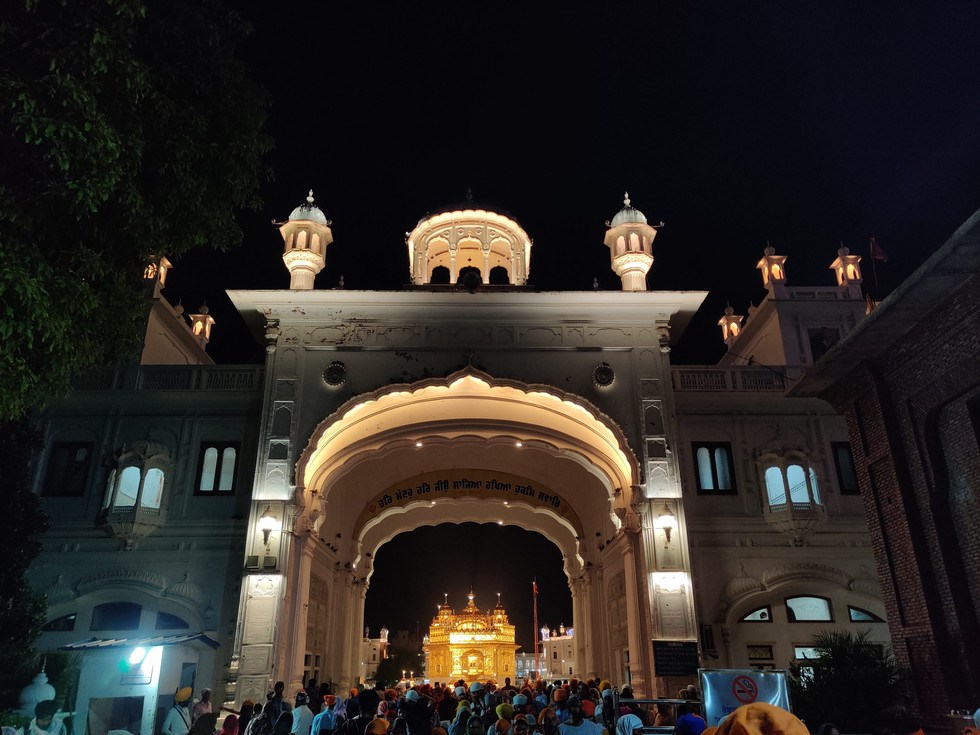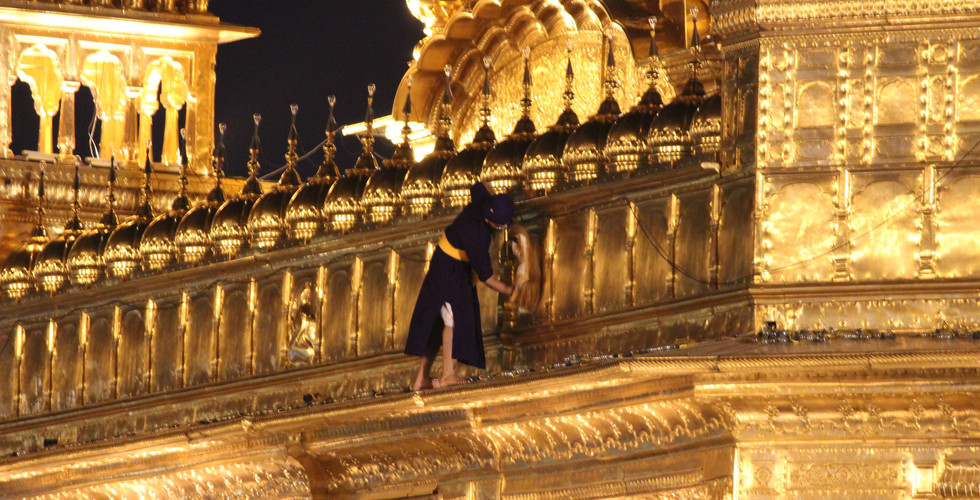Amritsar: Where Partition's Legacy Meets Prayer's Resonance
- Sai Venkatesh Vemuri
- Mar 10, 2024
- 7 min read
Updated: Nov 12, 2024
This vibrant city in Punjab, India, holds profound historical significance. One can explore the rich tapestry of culture, cuisine, and devotion against the backdrop of its storied past.

Table of Contents
Amritsar, located in the northwestern Indian state of Punjab, is a city with a rich historical and cultural legacy. Its name, "Pool of the Nectar of Immortality," is a reflection of the serene Amrit Sarovar tank encircling its most revered landmark, the Golden Temple.
The colonial period in Amritsar was marked by a oppression and resilience. During the British colonial rule in India, Amritsar emerged as a focal point of political resistance and cultural assertion. The Jallianwala Bagh massacre, a pivotal event in the Indian Freedom Struggle, unfolded on April 13, 1919, in this city. This tragic incident is etched into the collective memory of every Indian, often recounted in history textbooks. The British troops under the command of Colonel Reginald Dyer blocked the only passage and fired indiscriminately on a crowd of peaceful protesters who had gathered at the Jallianwala Bagh. The indiscriminate firing resulted in the deaths of hundreds and left thousands wounded, forever imprinting this somber chapter in India's struggle for independence.
Jallianwala Bagh
This site is a memorial of national importance and houses a museum, gallery. It was recently renovated for centenary commemoration, which some say diminished the impact of the tragedy. The entrance to the site is through a narrow passage, which served as the sole entry and exit point during the massacre. This route mirrors the path taken by General Dyer and his troops, effectively blocking any chance of escape for the victims.

Several galleries house an array of exhibits, including photographs, screens, sculptures, and more, offering a comprehensive journey through Punjab's history, its colonial era, and the struggle for independence.
The Rowlatt act, officially known as the Anarchical and Revolutionary Crimes Act of 1919, granted the authorities extensive powers to arrest and imprison individuals suspected of revolutionary activities without trial and for an indefinite period. The act essentially curtailed civil liberties and gave the colonial government draconian powers to suppress dissent and political opposition. The Rowlatt Act sparked widespread outrage and protest across India. The Jallianwala Bagh massacre in Amritsar, where British troops opened fire on unarmed protesters, was a direct consequence of the discontent caused by the Rowlatt Act. It led to the non-cooperation movement and further fuelled the demand for self-rule and independence from British rule.

Approximately 1,650 rounds were fired in just 15 minutes, causing complete chaos. Desperate individuals attempted to scale the walls or plunge into the solitary well within the garden in a bid to escape the onslaught. The direct firing and ensuing stampede claimed countless lives, with over 120 bodies recovered from the well alone. Even today, the walls of this site stand as silent witnesses to the harrowing events that transpired.
A memorial was erected, paying homage to all those who lost their lives in the tragic massacre, reminding us of the debt of gratitude we owe to those who fought for our freedom.

Even today, visiting this place will transport you back in time and evoke the horrors of the past. These sites serve as reminders of the sacrifices made for our freedom, reminding us never to take them for granted.

One of the aspects I adore about Amritsar, especially the vicinity surrounding the Golden Temple, is its pedestrian-friendly environment. Many areas prohibit motorized vehicles, creating a conducive atmosphere for leisurely strolls and effortless exploration of nearby attractions.
Partition Museum
The Partition of 1947 was a hastily executed division that led to the displacement and suffering of millions of people. Through a collection of photographs, documents, and videos, the museum commemorates the pain and upheaval experienced by those affected by the Partition, to whom the scars of this event last to this day. Photography is restricted inside the museum.

Durgiana Mandir
Shri Durgiana Mandir stands as a prominent landmark in Amritsar, drawing numerous visitors due to its striking resemblance to the Golden Temple. Situated amidst a sacred lake, its marble walls adorned with intricate carvings and silver doors add to its allure. Dedicated to Goddess Durga, the temple provides a tranquil atmosphere for the visiting devotees.
Qila Gobindgarh
Gobindgarh Fort, nestled in the heart of Amritsar, holds historical significance as it was conquered by Maharaja Ranjit Singh, who renamed it to honor the 10th Sikh guru, Guru Gobind Singh.

As a bastion of military strength, the fort features a two-tier system of walls fortified by a deep moat. Guarding its perimeter are numerous bastions and watchtowers strategically positioned for defence.

Within the fort, you'll find various structures including a bungalow, Durbar Hall, and Toshakhana.
Visitors to the fort can enjoy various cultural programs, including the immersive movie experience "Sher-e-Punjab," which narrates the stories of Maharaja Ranjit Singh. Additionally, live Bhangra performances add to the vibrant atmosphere of the place.
Attari-Wagah Border
The Attari-Wagah Border, situated approximately 30 kilometers from Amritsar, serves as a significant crossing point between India and Pakistan, situated near the towns of Attari and Wagah respectively. The journey from Amritsar typically takes less than an hour. It is renowned for its daily ceremonial closing of the border gates, famously known as the "Border Ceremony" or "Beating Retreat Ceremony." To ensure a seamless experience, it's advisable to book tickets in advance via the Attari BSF website, securing reserved seats closer to the border gate. Additionally, arriving early is recommended as visitors are required to walk a considerable distance and undergo security checks.

One will witness the colorful and intense patriotic atmosphere. We were here just two days before Independence Day, so the atmosphere was even more electrifying. The kids and women were allowed at the center, where they cheered with flags, danced to the tunes of patriotic songs. The entire seating area was packed, with several people standing to catch a glimpse of the ceremony.
The border post is managed by the Border Security Force (BSF) on the Indian side and Pakistan Rangers on the other side. The BSF personnel actively engage with the audience, ensuring high spirits throughout the event.
At the commencement of the ceremony, keep an eye out for the canine unit's furry friends scouring the premises.

The ceremony commences with the sound of a trumpet, followed by the soldiers marching down the stairs.
For the next half hour, you'll witness various personnel marching along the central path with remarkable coordination.

During the ceremony, you'll witness the distinctive high kicks and a showcase of amicable aggression.

The guards on each side exchange lightning-fast handshakes with a smile at the beginning and end of the ceremony.

As the sun sets, the flags on each side are lowered in perfect synchrony.

The flag is carefully folded and taken back, signifying the end of the ceremony. Following this, the border gates are closed on both sides.

Experiencing the ceremony should definitely be on everyone's bucket list. The patriotic fervor you feel here is unlike any other. Moreover, observing people across the border makes you realize that there's so much in common, and a mere physical boundary shouldn't create such a significant divide in the minds.

Sri Harmandir Sahib, Golden Temple
Sri Harmandir Sahib, known as the Golden Temple, holds profound significance as the spiritual and cultural cornerstone of Sikhism worldwide. Encircled by a sacred sarovar (water tank) on all sides, the temple is accessible through a single path leading to its sanctum. Adorned with gold both inside and out, earning its iconic title, the Golden Temple captivates visitors with its radiant dome, which gleams majestically in the sunlight and decorative lighting in the night.
The temple welcomes people of all faiths, fostering an atmosphere of inclusive devotion. It stands as a testament to community spirit, with individuals contributing in various capacities. A must-experience ritual is participating in the Langar, a communal kitchen where everyone is welcome to partake.
You can immerse yourself in the serene atmosphere here and find the tranquillity in the air and within
While you're in Amritsar, make sure to dig into some delicious local eats, especially the iconic kulchas!
And make sure not to miss out on wandering through the bustling streets and and grab some goodies along the way.
And that wraps up this journey! Be sure to explore more stories on this blog. I'd love to hear from you, so feel free to connect through the contact section.
Essential Information
Who should visit?
Culinary Enthusiast
Weekender
Budget Explorer
Spiritual Seeker
When to visit?
Recommended -October to March
Where to Stay?
Madpackers
What to do?
Explore the Golden Temple during both day and night to witness its beauty in different lighting conditions
Beating Retreat Ceremony at Attari-Wagah Border
Jallianwala Bagh
Partition Museum
Qila Gobindgarh
Partition Museum
How to travel?
Amritsar is accessible by flight or train from major cities across India.
Most of the places near the Golden Temple are within walking distance or can be easily reached by auto-rickshaw.
You can opt for a shared auto-rickshaw or dedicated cab to reach the Attari-Wagah Border.
Recommended Trip Duration
2 Days / 1 Night*
Estimated Trip Budget
~INR 5,000 per Person*
* Excluding transportation costs via flight or train, and if you'll be traveling around via public transport or in a group of four using a car.
_PNG.png)













































































Comments